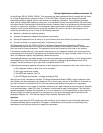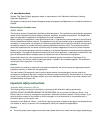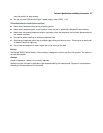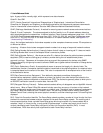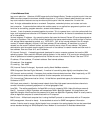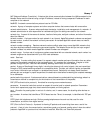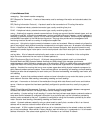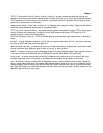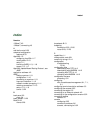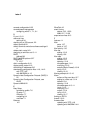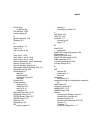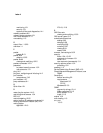Glossary 5
NAT (Network Address Translation): A feature that allows communication between the LAN connected to the
Netopia Router and the Internet using a single IP address, instead of having a separate IP address for each
computer on the network.
NetBIOS: A network communications protocol used on PC LANs.
network: A group of computer systems and other computer devices that communicate with one another.
network administrator: A person who coordinates the design, installation, and management of a network. A
network administrator is also responsible for troubleshooting and for adding new users to the network.
network log: A record of the names of devices, location of wire pairs, wall-jack numbers, and other information
about the network.
network number: A unique number for each network in an internet. AppleTalk network numbers are assigned
by seed routers, to which the network is directly connected. An isolated AppleTalk network does not need a
network number.
network number remapping: Resolves network number conflicts when two or more AppleTalk networks that
may have duplicate network numbers are connected together. The Netopia Router lets you set up a range of
network numbers into which remote AppleTalk network numbers are remapped.
network range: A unique set of contiguous numbers associated with an extended network; each number in a
network range can be associated with up to 253 node addresses.
node: See host.
non-seeding: A router setting that causes it to request network number and zone information from any other
routers on the network connected to the non-seeding port. If it receives this information, it begins to route
packets through that port. See also hard seeding, seeding, seed router, and soft seeding.
packet: A group of fixed-length binary digits, including the data and call control signals, that are transmitted
through an X.25 packet-switching network as a composite whole. The data, call control signals, and possible
error control information are arranged in a predetermined format. Packets do not always travel the same
pathway but are arranged in proper sequence at the destination side before forwarding the complete message
to an addressee.
packet-switching network: A telecommunications network based on packet-switching technology, wherein a
transmission channel is occupied only for the duration of the transmission of the packet.
PAP (PPP authentication protocol): A method for ensuring secure network access.
parameter: A numerical code that controls an aspect of terminal and/or network operation. Parameters
control such aspects as page size, data transmission speed, and timing options.
port: A location for passing data in and out of a device, and, in some cases, for attaching other devices or
cables.
port number: A number that identifies a TCP/IP-based service. Telnet, for example, is identified with TCP port
23.
POTS (plain old telephone service): Ordinary analog telephone service such as that used for voice
transmission, as distinct from digital service.
PPP (Point-to-Point Protocol): A protocol for framing IP packets and transmitting them over a serial line.
protocol: A set of rules for communication, sometimes made up of several smaller sets of rules also called
protocols. AppleTalk is a protocol that includes the LocalTalk, EtherTalk, and TokenTalk protocols.



